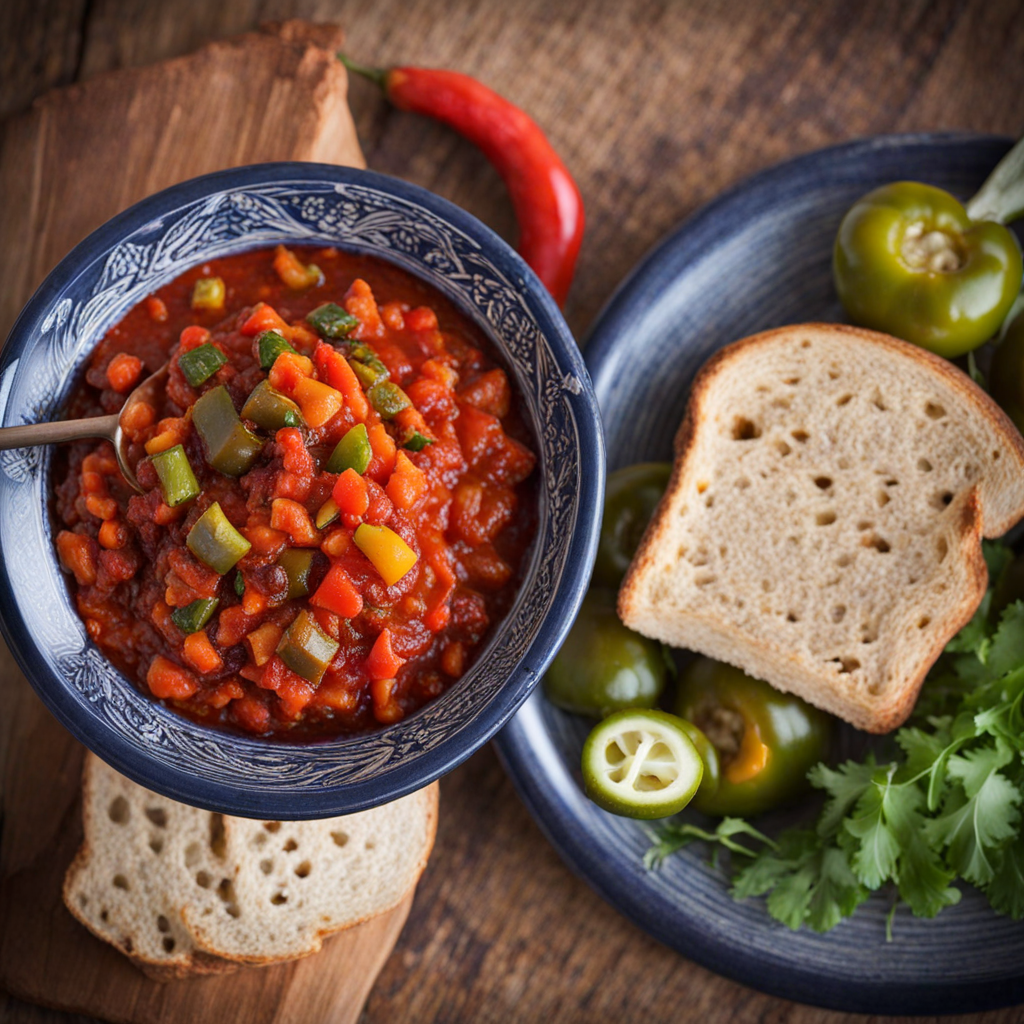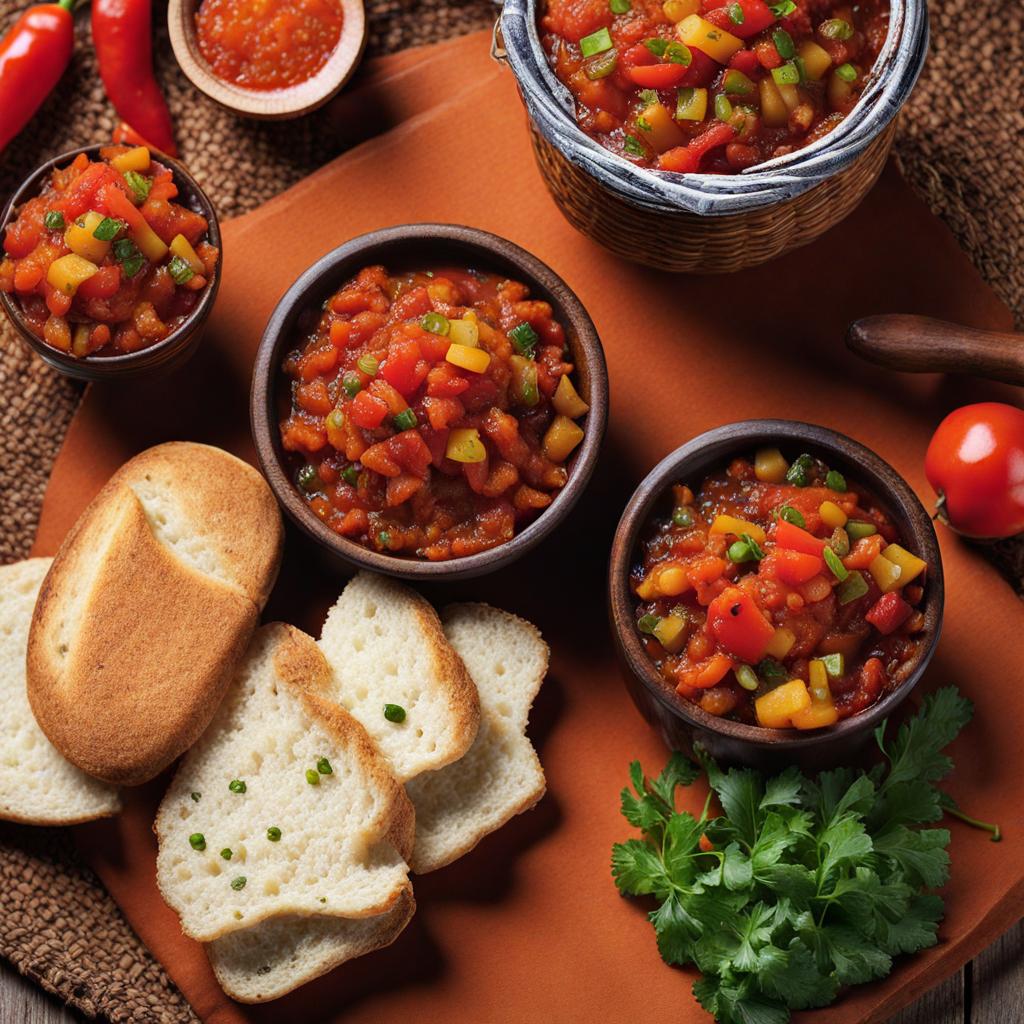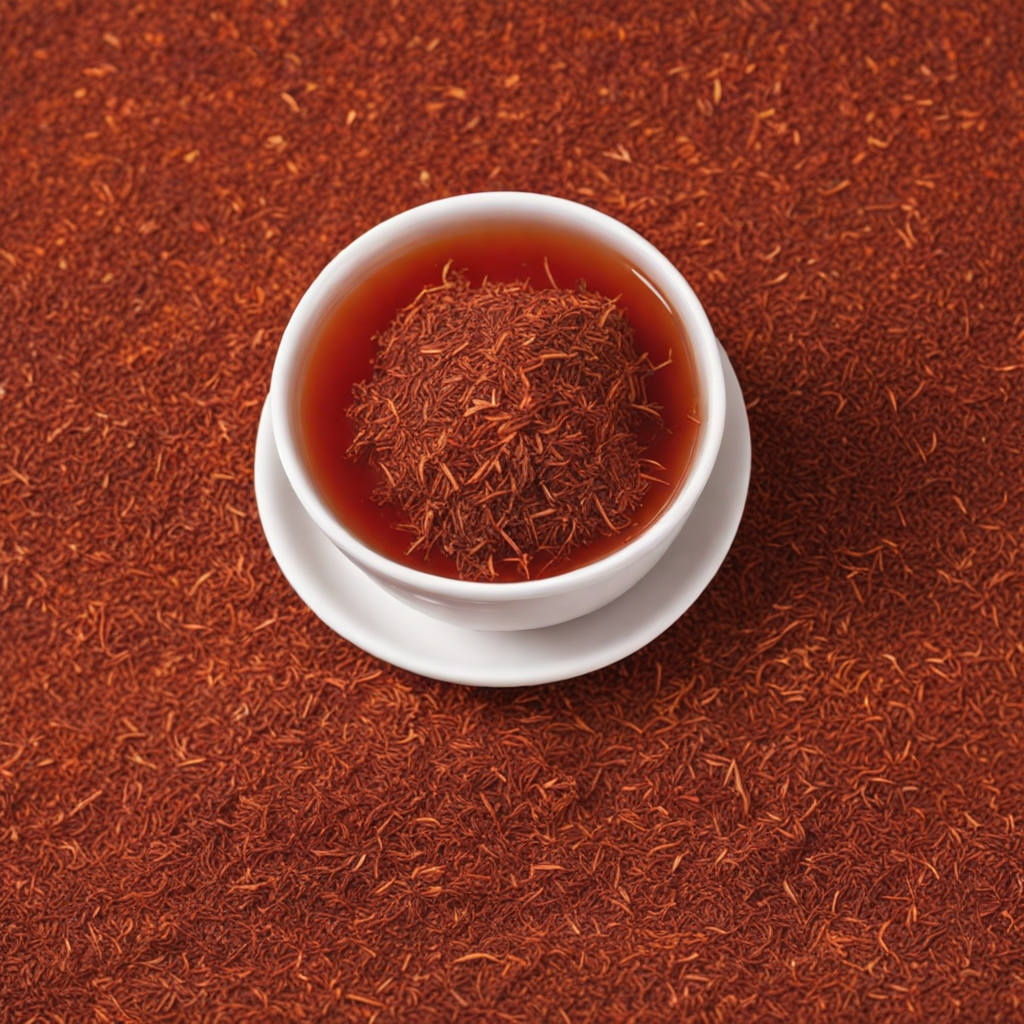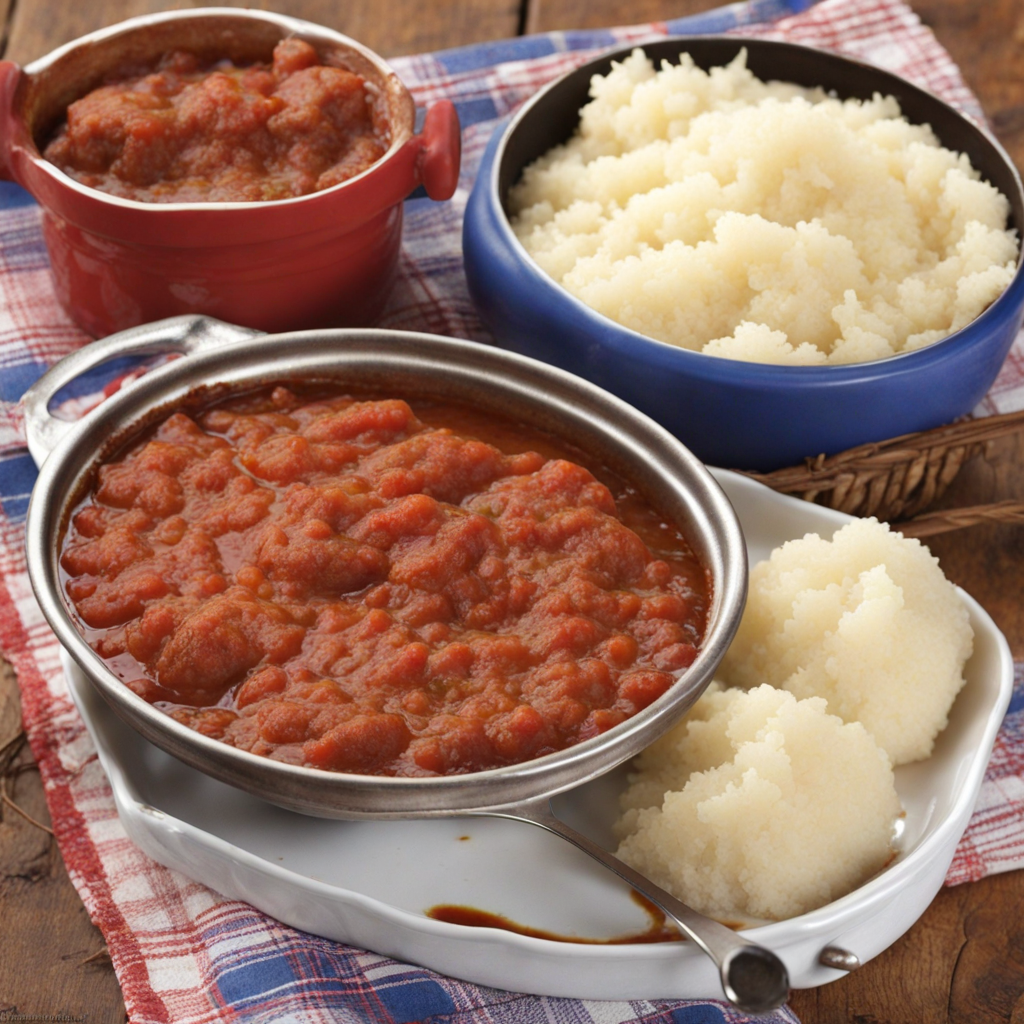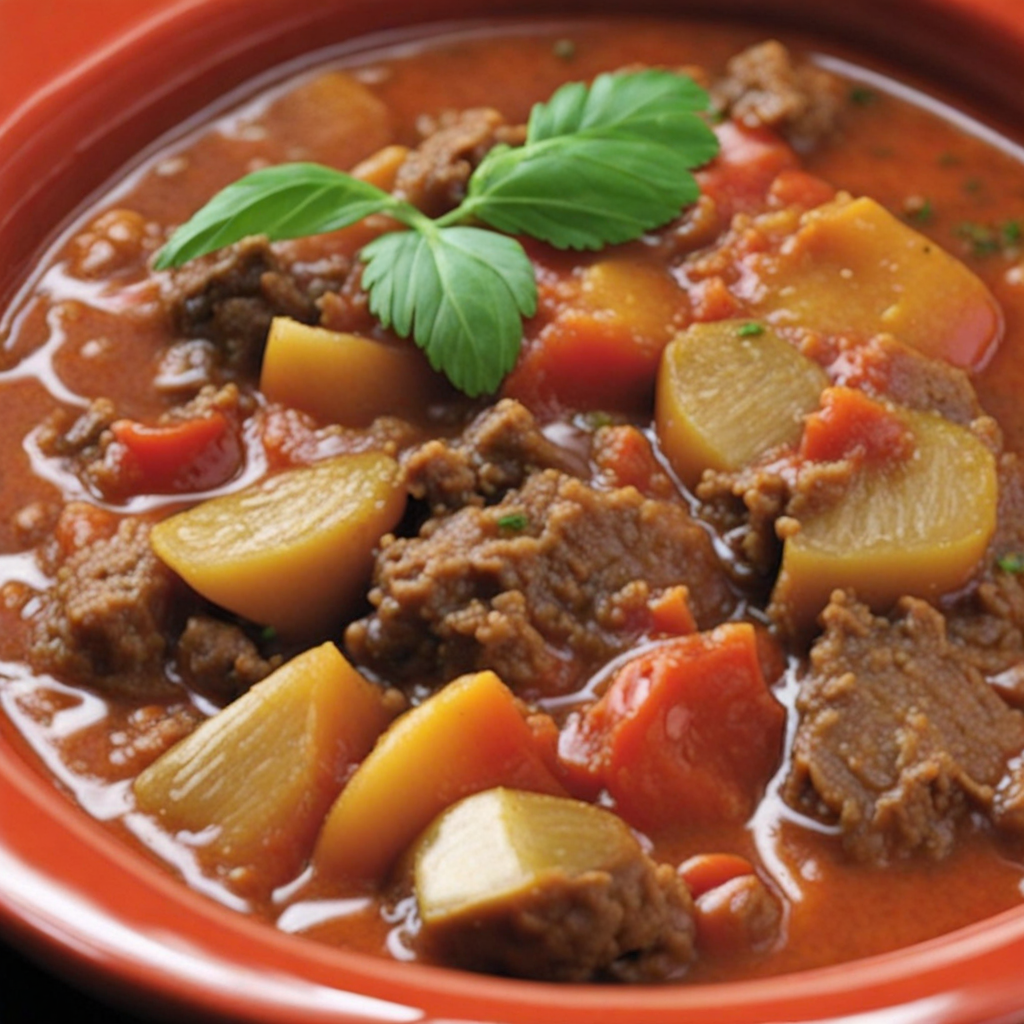Chakalaka
Chakalaka is a vibrant and spicy South African relish that embodies the spirit of the nation’s rich culinary heritage. This dish is a medley of vegetables, typically including tomatoes, onions, and bell peppers, all sautéed together to create a hearty base. The addition of beans, often baked beans, adds a delightful creaminess and nutritional balance, while the signature spices—such as curry powder, garlic, and ginger—infuse the dish with an irresistible warmth and depth of flavor. The combination of fresh ingredients and bold seasonings elevates Chakalaka from a simple vegetable dish to a flavorful accompaniment that can enhance a variety of meals, especially barbecued meats and stews. What makes Chakalaka truly unique is its adaptability. Each family or region may have its own version, allowing for personal touches like the inclusion of grated carrots, cabbage, or even a splash of vinegar for tanginess. Some recipes may also feature a hint of chili for those who enjoy a spicier kick. This versatility not only reflects the diverse culinary influences found within South Africa but also allows for endless experimentation in the kitchen, making it an exciting dish for food lovers seeking new flavors. Served warm or cold, Chakalaka is often enjoyed as a side dish or a condiment, pairing beautifully with traditional South African staples like pap (a cornmeal porridge) or boerewors (a type of sausage). Its zesty profile and colorful presentation make it a feast for the eyes as well as the palate. Whether you’re hosting a braai (barbecue) or looking to add a touch of South African flair to your dinner table, Chakalaka is sure to impress with its bold tastes and comforting essence, inviting everyone to savor a taste of this beloved dish.
How It Became This Dish
Chakalaka: The Vibrant History of a South African Staple Chakalaka is a beloved South African dish that embodies the rich tapestry of the nation’s culinary heritage. This spicy vegetable relish, often served alongside bread, pap, or grilled meats, reflects not only the diverse ingredients available in South Africa but also the myriad cultures that have contributed to the country’s food landscape. Its origins, cultural significance, and evolution over time tell a story of resilience, community, and the blending of traditions. #### Origins: A Melting Pot of Influences The precise origins of chakalaka are somewhat murky, but its roots can be traced back to the townships of Johannesburg, particularly during the apartheid era in the 1960s and 1970s. It is widely believed that chakalaka emerged as a response to the need for a nutritious, flavorful accompaniment that could stretch limited resources. The dish is thought to have been influenced by the migration of workers from rural areas to urban centers, where they brought with them their culinary traditions, often adapting them to available ingredients. Chakalaka is a perfect illustration of South Africa's melting pot. The name itself is derived from the Zulu word "chakalaka," which means "to mix" or "to stir." While the dish is most commonly associated with the Zulu and Xhosa cultures, it has also absorbed flavors from various other ethnic groups, including Indian and Cape Malay influences. The use of spices, such as curry powder, demonstrates this Indian connection, while the incorporation of tomatoes, onions, and peppers reflects a broader Southern African tradition of vegetable preparation. #### Cultural Significance: Food as Identity Chakalaka is more than just a dish; it is a symbol of South African identity and unity. During the apartheid years, food became a means of survival and expression for marginalized communities. Chakalaka was often made in large batches, allowing families and friends to gather and share meals, fostering a sense of community and shared experience. It was common to find chakalaka at gatherings, celebrations, and braais (barbecues), where it would accompany grilled meats, particularly boerewors, a type of South African sausage. The dish also holds a significant place in the context of post-apartheid South Africa. With the end of apartheid in the early 1990s, there was a renewed interest in South African cuisine, and chakalaka emerged as a culinary emblem of the nation’s diverse heritage. Food festivals, cookbooks, and culinary tourism began to promote traditional dishes, and chakalaka became a staple in homes and restaurants alike, showcasing the vibrancy of South African culture. #### Development Over Time: From Township to Table As chakalaka gained popularity, its preparation and presentation evolved. Originally a humble dish made from whatever vegetables were on hand, modern iterations of chakalaka often feature a more refined approach, incorporating a variety of ingredients and spices. While the base typically includes onions, tomatoes, and peppers, many cooks now experiment with additional vegetables like carrots, cabbage, and even beans, which contribute to its nutritional value and flavor. The dish has also been adapted to individual tastes and regional variations. In some areas, chakalaka is prepared with a fiery kick, while in others, it may be milder, catering to different palates. The introduction of canned chakalaka has made it accessible for those who may not have the time or resources to prepare it from scratch, yet many still prefer the traditional homemade version, which is believed to carry the essence of love and family. Chakalaka has also transcended its status as a mere side dish, finding its way into various culinary contexts. Chefs and home cooks alike have embraced it as a versatile ingredient, incorporating it into burgers, wraps, and even as a topping for pizzas. This adaptability speaks to the dish's enduring nature and its capacity to evolve with contemporary tastes while still honoring its roots. #### Chakalaka and the Global Culinary Scene In the 21st century, chakalaka has begun to capture the attention of food enthusiasts beyond South Africa’s borders. With the rise of global culinary trends emphasizing authenticity and local ingredients, chakalaka has emerged as a symbol of South African cuisine on the international stage. Food festivals, cultural exchanges, and online cooking platforms have introduced this beloved dish to a wider audience, sparking interest in traditional South African flavors. Social media has played a significant role in this global dissemination. Instagram and TikTok have become platforms for sharing recipes and cooking techniques, allowing people from around the world to engage with South African culinary traditions. As food lovers experiment with chakalaka, they not only discover its unique taste but also gain insight into the rich cultural history that informs it. #### Conclusion: A Dish of Resilience and Community Chakalaka stands as a testament to South Africa's complex history and cultural diversity. From its humble beginnings in the townships to its status as a celebrated dish enjoyed by many, chakalaka encapsulates the spirit of a nation that has navigated profound social and political changes. The dish encourages togetherness, reflecting the communal values inherent in South African society. As it continues to evolve and adapt, chakalaka remains a cherished part of South Africa’s culinary identity. It invites us to explore the stories behind the ingredients, the people who prepare it, and the memories created around the table. In every spoonful of this vibrant relish lies a narrative of resilience, love, and the enduring power of food to connect us all.
You may like
Discover local flavors from South Africa


